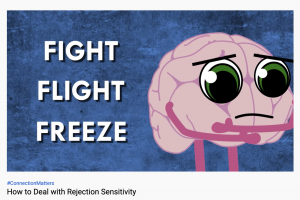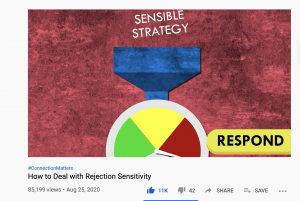Rejection Sensitivity & ADHD
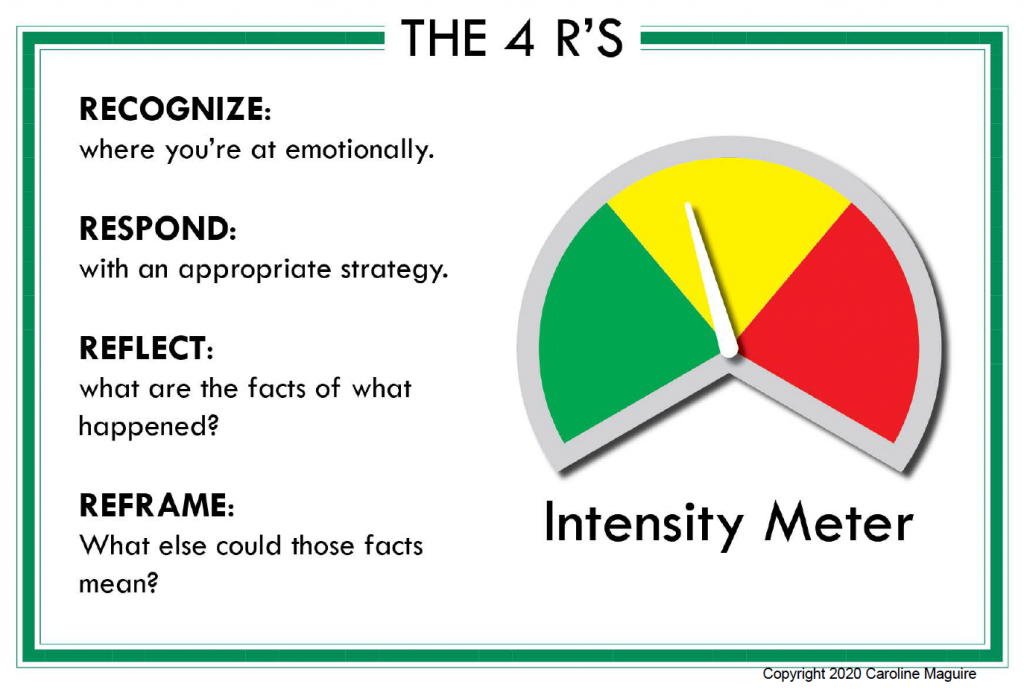
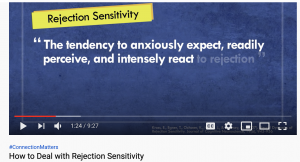 When you experience Rejection Sensitivity, you have a heightened reaction to a real, perceived or even anticipated event, person or situation. This reaction feels all-consuming and mammoth inside you and it’s crushing – even crippling!
When you experience Rejection Sensitivity, you have a heightened reaction to a real, perceived or even anticipated event, person or situation. This reaction feels all-consuming and mammoth inside you and it’s crushing – even crippling!
When this event occurs, even if it is a small non-event to most, it feels enormous and can literally is paralyze you. This overwhelming physical sensation feels unbearable and on a scale of 1 to 10 – it is 10+! What matters here is how it makes you feel; not the actual situation.
Our brains are ancient, so when they perceives a threat, our body and brain go into fight, flight or freeze modes. The situation feels so intense because your brain is in “survival” mode and a deeply, automatic programmed neurological alarm is going off to warn you to get away as if a saber tooth tiger is literally coming to eat you…
…and you go into fight, flight or freeze. This reaction – this rejection sensitivity – can be past trauma or anticipation, but regardless, this fear causes a defensive cascade in the brain.
Future planning is the key to strategizing ways of softening or eliminating these reactions. To help avoid these intense reaction and calm your brain and body in the moment, I have invented the Intensity Meter so you can figure out How Intense Does It Feel? How intense 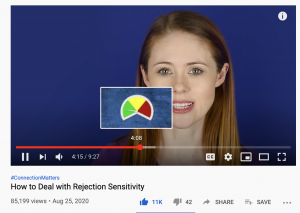 this reaction feels in your body indicates which strategy you need to use in order to restore oxygen and blood back to the deeper regions of the brain and calm your body.
this reaction feels in your body indicates which strategy you need to use in order to restore oxygen and blood back to the deeper regions of the brain and calm your body.
3 Steps to Managing the Negative Impact of Rejection Sensitivity:
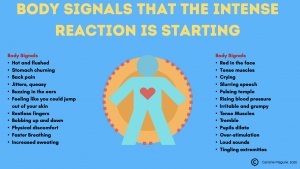
Step One: Figure out how typical intense triggers and events feel in your body.
Step Two: Now that you know how intense these emotions feel, you can begin to pick strategies ahead of time to use when your reaction has reached a 7, 8, 9 or 10 in order to stop that runaway cycle, and help regain control so it returns to the wise-thinking brain. This ca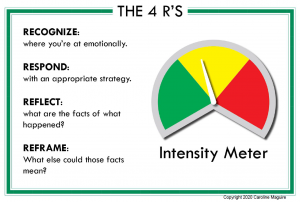 lming is like an engine of a car that is overheated and revved up. Physical strategies cue your body that “you got this”, and there is no threat and it can stop the alarm system.
lming is like an engine of a car that is overheated and revved up. Physical strategies cue your body that “you got this”, and there is no threat and it can stop the alarm system.
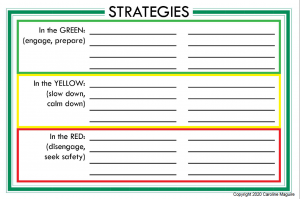 There are 4 R’s to help you manage these intense reactions:
There are 4 R’s to help you manage these intense reactions:
(please send an email to me if you would like to download this tool)
Step Three: Develop everyday strategies to keep your thinking brain in charge and fend off the runaway reaction cycle. The more you intervene with a strategy when your reaction starts, the more you can avoid your body going into fight, flight or freeze.
Social Skills Deeper Dive
More actionable advice, exercises and videos can be found in the Store

Watch the Youtube Episode: How To Deal With Rejection Sensitivity
Read more on how to help your child build social skills
How to Coach Your Child – Kids need good role models. Skills like listening and communication are critical. This exclusive program for parents teaches how to coach your kids for life.
Adults with ADHD Social Skills Training: How to Get Along with Everyone – 2-Part Seminar with Caroline Maguire
Rusty Social Skills Bundle – Everything you need to help students return to the classroom for the development of critical social skills.
Coaching Conversations Video Course – How to use the lessons in Why Will No One Play with Me? in everyday life using real people and real scenarios
From “Hi” to a Full Conversation – How to adapt conversation starters to initiate small talk.
Joining a group Infographic – Make joining a group less intimidating – and more fun!
Building a Conversation Infographic – Learn how to engage in reciprocal give-and-take
Steps for Joining a Group Video – Step by step details to comfortably and successfully join a group
How to Read the Room as an Adult – Managing perceptions and engaging successfully
How to SEL – HOW TO help children build social skills

